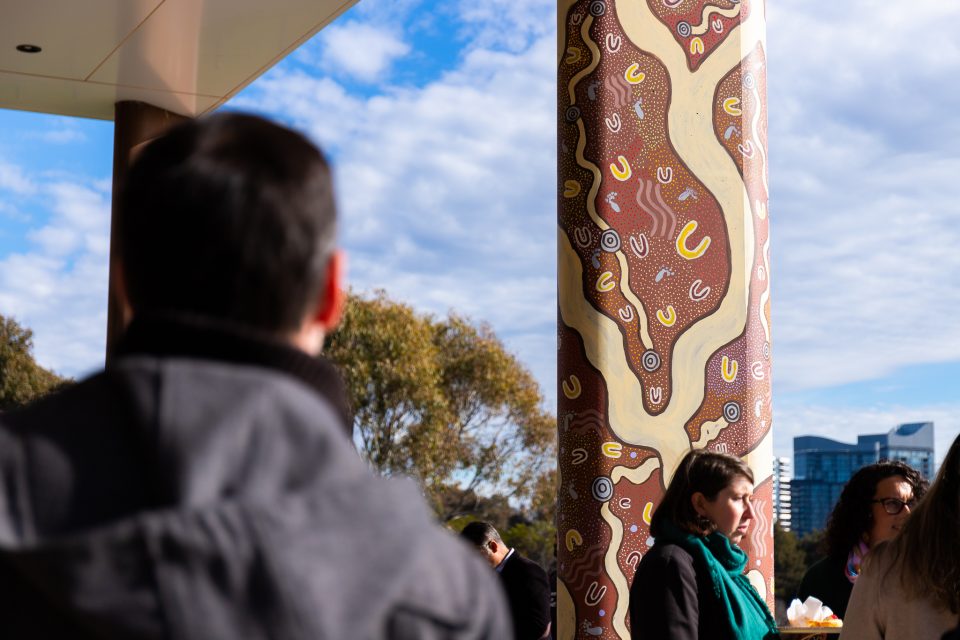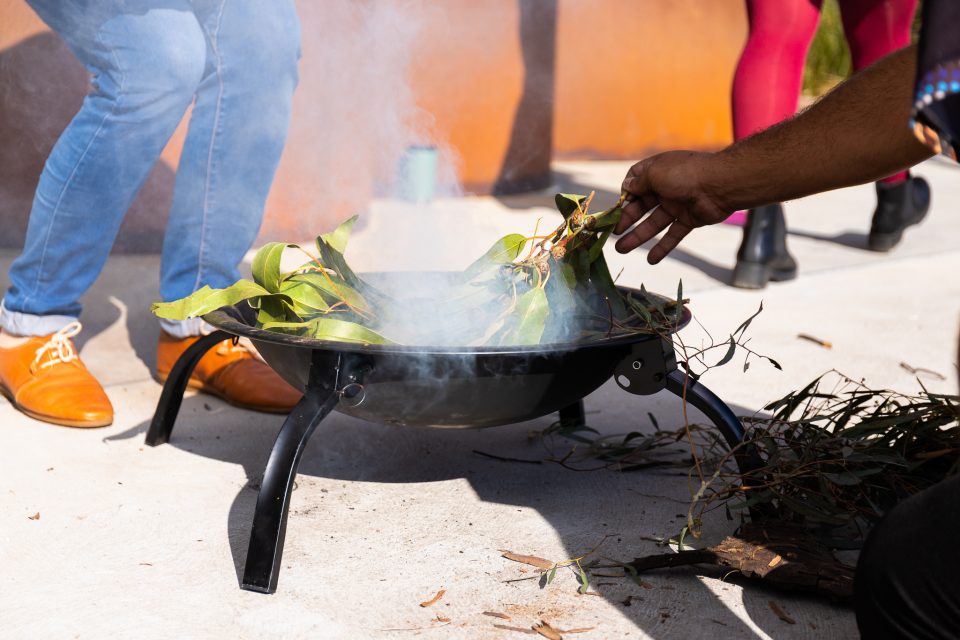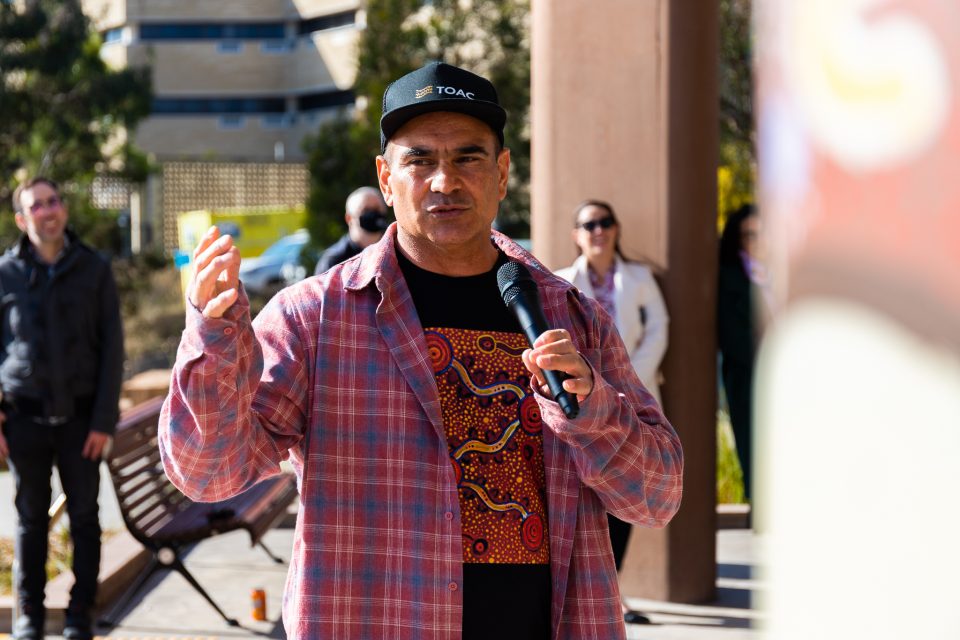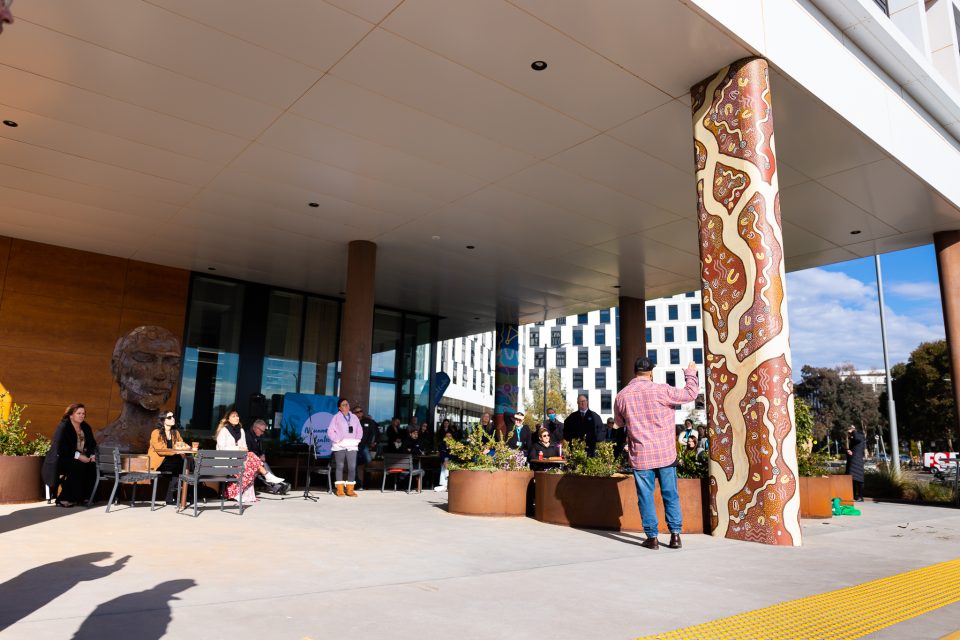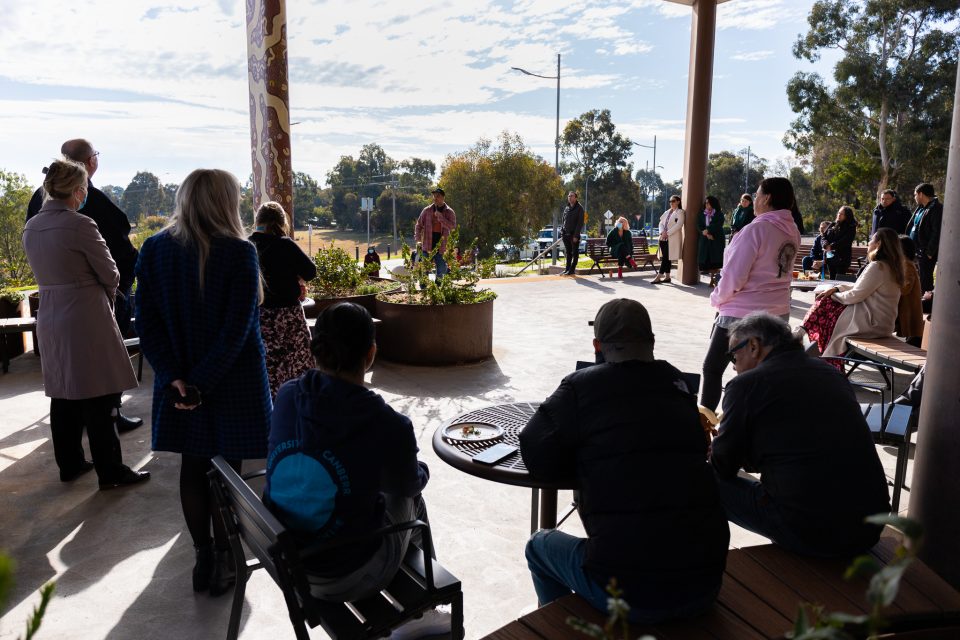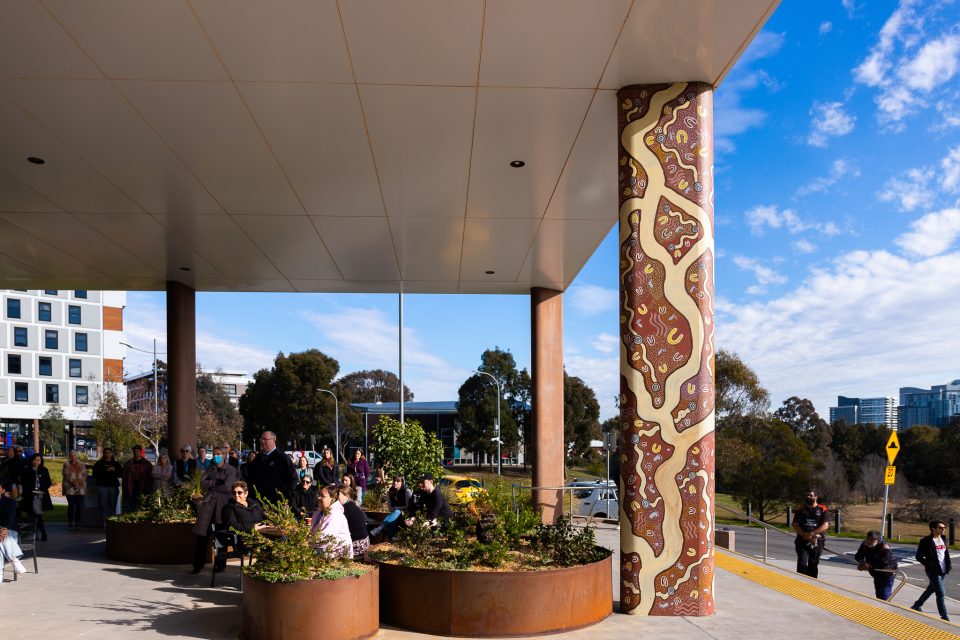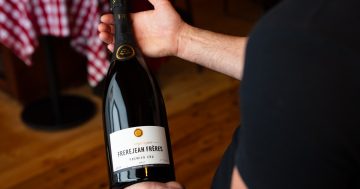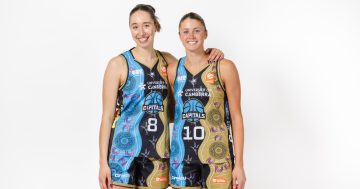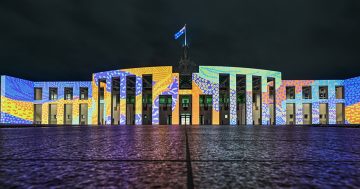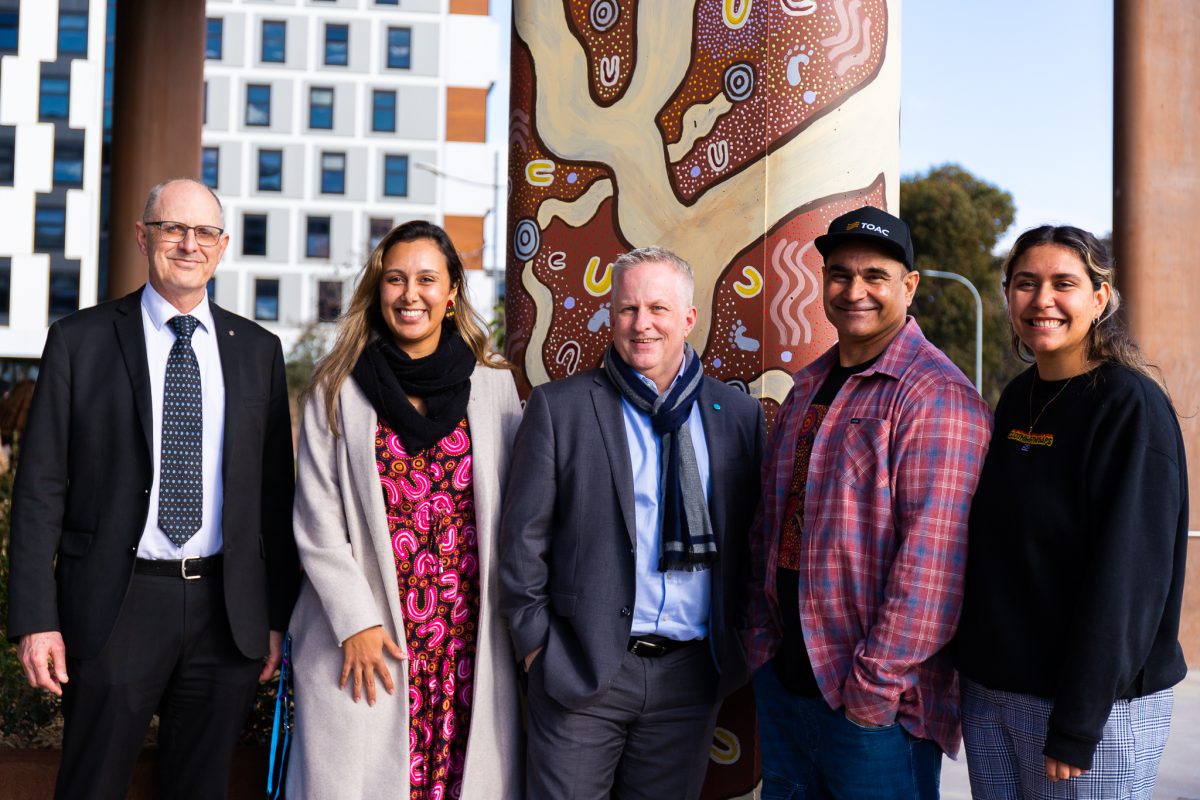
(Left to right) Deputy Vice-Chancellor and Vice-President Academic Professor Geoff Crisp, Office of Aboriginal and Torres Strait Islander Leadership and Strategy acting associate director Kirsten Tapine, Vice-Chancellor and President Professor Paddy Nixon, Traditional Owners Aboriginal Corporation cultural director Richie Allan and UC student Shaenice Allan. Photo: University of Canberra.
For Ngunnawal and Kamilaroi man Richie Allan, his birth on Ngunnawal Country where he lives and where his mother, Aunty Violet Sheridan, is an elder bestows a duty.
“It’s my obligation to tell the true Ngunnawal story,” he says.
“Canberra means ‘meeting place’ in the Ngunnawal language, but there was a Ngunnawal history and masterplan here before the Western one.”
As the cultural director of the Traditional Owners Aboriginal Corporation, where he manages cultural awareness, education and Ngunnawal relationships, Richie says opportunities to tell this story don’t come up nearly as often as they should.
So when he and his daughter, University of Canberra student Shaenice Allan, were invited to paint one of the imposing structural poles at the entrance of the university’s Ngunnawal Centre, they knew it had to tell the story of what was there before the university.
“It was an area where the Ngunnawal people camped and they educated each other and talked about food and animals,” Richie explains.
“In a way, it was a university long before the Western university was here.”
The university is offering the poles, one by one, to Indigenous artists as blank canvasses to showcase their work and to Indigenise and brighten up the Ngunnawal Centre.
The first pole was painted in line with the 2021 NAIDOC Week theme “Heal Country”, but Richie and Shaenice’s pole – the second in the series – stands as a reminder that the university is and always will be on Ngunnawal Country.
Aside from hiring a scissor lift to reach the heights of the pole, Richie says little planning was required to achieve this.
“We already know the stories – it’s just a matter of waiting for organisations to let us tell them and then getting stuck in,” he says.
“The only planning discussion we had was how much detail to go into – because there are a lot of stories to tell.”
The forms and colours used on Richie and Shaenice’s pole pay tribute to the “real lecturers” of the land.
“It’s all creams and purples and pinks, yellows, reds and greens – each colour reflects the native flora and fauna in the area,” Richie says.
“They are the real lecturers, they are the real doctors and scientists and they can teach us so much more than we could ever know.
“Those were the educators our people followed, they’re the subjects we studied.”
A central feature of the artwork depicts an intricate network of waterways.
“We can’t see them as much now because we’ve built up and blocked those waterways,” Richie says.
“But we have natural springs that flow all around under Canberra.”
Richie says the pole tells this and many other stories of a Western indifference to the intelligence of the natural world.
“Every animal that lives on Ngunnawal Country has a role to play in conservation but in Western society we don’t take that into account,” he says.
“We create land management plans without factoring in what the animals are already contributing to land management, the way our people did time and time again. These days we’re quick to cull animals in areas but slow to understand what they’re actually doing there.”
Richie hopes each contribution to the UC Ngunnawal Centre pole art project will be a doorway to conversations that he feels should be reflected in all education in Australia.
“Ngunnawal culture has been here for 65,000 years. Always was and always will be,” he says.
“We’re open to sharing that and helping people begin their cultural journey, but people have to commit to listening – and I mean listening, not just hearing – these stories and walking together with us in that world. And I know it’s hard for non-Indigenous people to walk in a world they don’t understand, but I believe if you can see it through our eyes and hear it through our words, it becomes easier.”


